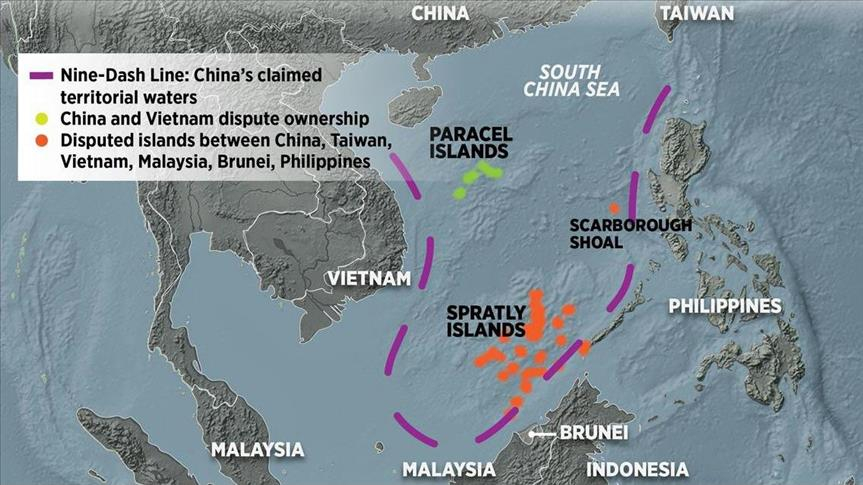Note4Students
From UPSC perspective, the following things are important :
Prelims level: ASEAN
Mains level: India-ASEAN Relations

Central idea: The article highlights India’s increasing military cooperation with ASEAN countries, with a special emphasis on the upcoming ASEAN-India Maritime Exercise (AIME) in the South China Sea.
ASEAN-India Maritime Exercise
- The first ASEAN-India Maritime Exercise (AIME) is set to commence on May 2, 2023, with war games to be held in the South China Sea.
- INS Satpura and INS Delhi will participate in the exercise.
- The exercise is divided into two phases: ‘Harbour Phase’ and ‘Sea Phase.’
- The exercise is aimed at fostering close cooperation and conducting seamless operations in the maritime domain between the Indian Navy and ASEAN navies.
About ASEAN (Association of Southeast Asian Nations)
| Details | |
| Members | Brunei Darussalam, Cambodia, Indonesia, Laos, Malaysia, Myanmar, Philippines, Singapore, Thailand, Vietnam |
| Formation | August 8, 1967 |
| Headquarters | Jakarta, Indonesia |
| Purpose | To promote economic growth, social progress, and cultural development |
| Economic integration | ASEAN Free Trade Area (AFTA) and ASEAN Economic Community (AEC) |
| Political cooperation | ASEAN Regional Forum (ARF) and ASEAN Defense Ministers Meeting (ADMM) |
| Cultural cooperation | ASEAN Socio-Cultural Community (ASCC) |
| Relationship with India | Strategic partnership, trade, and investment |
Why such exercise?
- Defying territorial claims: The South China Sea is a critical waterway that connects the Indian Ocean with the Pacific Ocean, and it is also a contested region where multiple countries have territorial claims.
- Support freedom of navigation: Conducting exercises in this region allows India to demonstrate its commitment to maintaining freedom of navigation and upholding international maritime laws.
- Indo-Pacific Strategy: India’s growing strategic ties with ASEAN are part of its broader Indo-Pacific strategy, which seeks to promote a rules-based order and ensure stability in the region.
- Counterbalancing China: As China’s influence in the Indo-Pacific grows, India sees ASEAN as a key partner in balancing China’s assertiveness and promoting regional stability.
India’s stakes in South China Sea
The South China Sea plays a critical role in India’s security and well-being as-
- Global common: The SCS is not China’s sea, but a global common.
- Unimpeded navigation: It has been an important sea-lane of communication for centuries, and passage has been unimpeded. Indians have sailed these waters for well over 1,500 years with a continuous trading presence.
- Global trade chokepoint: Nearly $200 billion of India’s trade passes through the South China Sea, and thousands of Indian citizens study, work and invest in ASEAN, China, Japan and the Republic of Korea.
Key significance: India’s Responsiveness to ASEAN
India needs to be responsive to ASEAN’s expectations.
- Meeting ASEAN’s aspirations: While strategic partnerships and high-level engagements are important, ASEAN expects longer-lasting buy-ins by India in their future.
- History of lesser importance given by India: ASEAN has taken the initiative time and again to involve India in Indo-Pacific affairs, even though India’s current level of trade or investment with ASEAN does not make a compelling argument.
- Broader perception of India as key partner: ASEAN has deliberately taken a longer-term view, given the importance of regional arrangements for economic recovery and rejuvenation.
Back2Basics: South China Sea Dispute
- It is a dispute over territory and sovereignty over ocean areas, and the Paracels and the Spratlys – two island chains claimed in whole or in part by a number of countries.
- China, Vietnam, the Philippines, Taiwan, Malaysia, and Brunei all have competing claims.
- Alongside the fully-fledged islands, there are dozens of rocky outcrops, atolls, sandbanks, and reefs, such as the Scarborough Shoal.
- China claims by far the largest portion of territory – an area defined by the “nine-dash line” which stretches hundreds of miles south and east from its most southerly province of Hainan.
- Beijing says its right to the area goes back centuries to when the Paracel and Spratly island chains were regarded as integral parts of the Chinese nation, and in 1947 it issued a map detailing its claims.
- It showed the two island groups falling entirely within its territory. Those claims are mirrored by Taiwan.
Get an IAS/IPS ranker as your 1: 1 personal mentor for UPSC 2024
